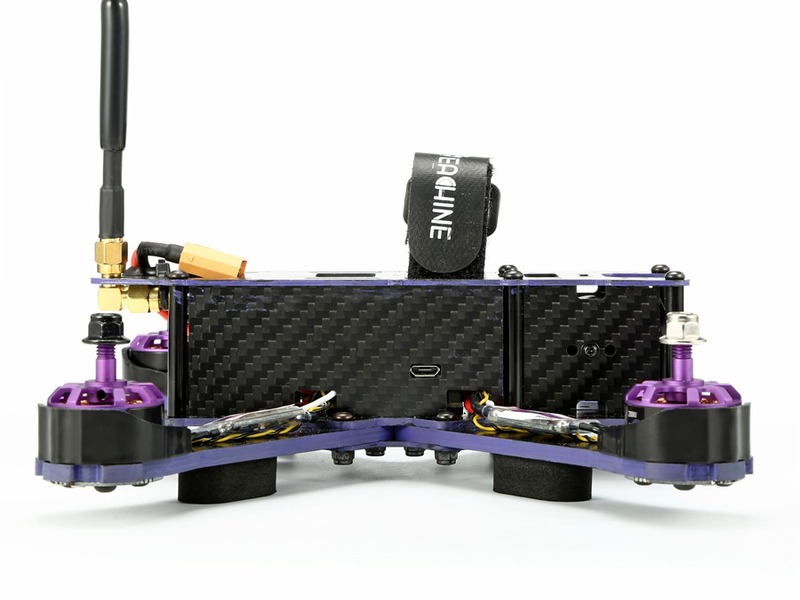How do you stabilize FPV drone footage?

Stabilizing FPV drone footage is an important part of creating professional-looking videos. There are several methods for stabilizing FPV drone footage, including using a gimbal, using software stabilization, and using a combination of both.
Using a Gimbal
A gimbal is a device that is attached to the drone and helps to stabilize the camera. It works by counteracting the motion of the drone and keeping the camera steady. This is the most effective way to stabilize FPV drone footage, as it eliminates the need for any post-production stabilization.
Gimbals come in a variety of sizes and styles, and can be used with different types of drones. They are usually powered by a battery and can be adjusted to different angles and speeds. Gimbals can also be used to create smooth panning shots and can be used in combination with software stabilization for even better results.
Using Software Stabilization
Software stabilization is a process that is done in post-production. It involves using software to analyze the footage and detect any motion that needs to be corrected. The software then applies a stabilization algorithm to the footage, which helps to smooth out any jittery motion.
Software stabilization is a great option for those who don’t have access to a gimbal, or for those who want to add a bit of extra stabilization to their footage. It is also a good option for those who want to save time in post-production, as it can be done quickly and easily.
Using a Combination of Both
Using a combination of both gimbal and software stabilization is the best way to get the most out of your FPV drone footage. By using a gimbal to stabilize the camera, you can eliminate any jittery motion, while using software stabilization to correct any remaining motion. This will give you the best possible results and will help to create professional-looking videos.
In conclusion, stabilizing FPV drone footage is an important part of creating professional-looking videos. There are several methods for stabilizing FPV drone footage, including using a gimbal, using software stabilization, and using a combination of both. Using a combination of both gimbal and software stabilization is the best way to get the most out of your FPV drone footage.
Comments / Question
-Using a higher shutter speed to reduce motion blur.
-Using a lower ISO setting to reduce noise.
-Using a narrower aperture to increase depth of field.
-Using a higher frame rate to reduce jitter.
-Using a higher bitrate to increase image quality.
-Using a higher dynamic range to capture more detail in shadows and highlights.
-Using a higher bitrate for video encoding to reduce compression artifacts.
2. Install larger propellers and a more powerful ESC.
3. Increase the weight of the drone with counterweights or an additional battery.
4. Install an additional gyroscope or accelerometer to increase stabilization.
5. Install a GPS module to enable the drone to use position hold and return-to-home features.
6. Install a PID tuner to further refine the drone's stability.
7. Install a vibration dampening system to reduce unwanted vibrations.
2. Use Anti-Vibration Mounts: Anti-vibration mounts help to reduce the vibrations from the drone and thus reduce the jello-effect.
3. Use a High Frame Rate: A higher frame rate helps to reduce the jello-effect by capturing more frames per second, thus reducing the blurriness of the footage.
4. Use a High Shutter Speed: A higher shutter speed helps to reduce the jello-effect by capturing more frames per second, thus reducing the blurriness of the footage.
5. Use a Low ISO Setting: A low ISO setting helps to reduce the jello-effect by reducing the amount of noise in the footage.
6. Use a Neutral Density Filter: A neutral density filter helps to reduce the jello-effect by reducing the amount of light entering the camera, thus reducing the blurriness of the footage.
2. Warp Stabilization: Warp stabilization is a post-processing technique that helps to reduce the jittery motion caused by the vibrations of the drone.
3. Color Grading: Color grading is a post-processing technique that helps to improve the overall look of the footage by adjusting the colors and contrast.
4. Noise Reduction: Noise reduction is a post-processing technique that helps to reduce the amount of noise in the footage.
5. Sharpening: Sharpening is a post-processing technique that helps to improve the overall sharpness of the footage.

